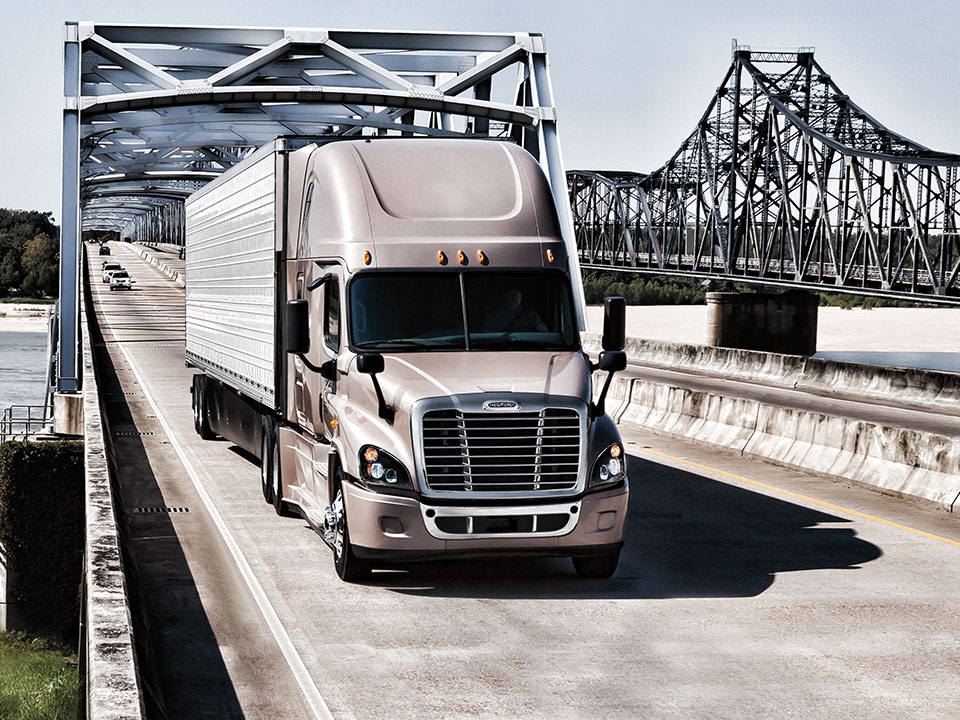Driver shortages, technician shortages, supply chain shortages…they all have major impacts on the trucking industry. One shortage that doesn’t get as much coverage…truck parking shortages.
Want to make life harder for drivers? Subject them to HOS regulations and then have them spend time looking for available spots to park legally. This is the dilemma that over-the-road drivers face daily, especially along the heavily trafficked I-95 corridor and I-5 in California. In 2020, the Federal Highway Administration said that 98 percent of drivers indicated they had difficulty finding safe parking. Last year, the truck parking issue became the fifth most important issue on ATRI’s list of top industry issues, following only driver retention, driver shortage, driver pay, and lawsuit abuse reform. But when professional drivers were asked for their biggest concerns, truck parking actually tied for first place alongside compensation.
Things were already bad when the pandemic hit and made it even worse. A Talk Business article cited research from ATRI and the OOIDA Foundation, “44% of respondents said truck parking was ‘somewhat harder’ or ‘much harder’ to find during the pandemic.”
There are approximately 313,000 truck parking spaces nationwide, but how many is less important than where they are. According to the American Trucking Associations (ATA), 38 percent of truck tonnage travels through areas that have only 8.5 percent of the legal truck parking spaces. As I noted at the beginning of this blog, that is definitely the case in the I-95 corridor, I-5 in California and the area around Chicago.
It’s not just the driver who pays the price
Although on the face of it, this might seem like a driver issue. It is, but it’s also an issue for the carrier the driver is working for. Time spent looking for parking is less time spent reaching the destination…and since time is money in this business, that’s a loss for everyone.
That’s why ATA and OOIDA, two groups that often don’t agree on certain policies are of one voice on this. An article that appeared last week in Freightwaves noted that both groups worked together on a letter to Pete Buttigieg, asking for $755 million over five years that would go towards funding truck parking projects. This is an issue that has bipartisan support in Congress as well. The letter noted that 70 percent of drivers found themselves violating HOS rules due to a lack of parking availability.
What steps can drivers take?
If a driver is approaching the mandated HOS and needs to stop driving, a space may be foumd…if the time is right. But if a driver is looking any time after dark (6 pm in the winter; 7 pm in the summer), that search becomes difficult…even at the biggest truck stops and rest areas along the nation’s highways.
Instead, they park at off-ramps (which may be illegal depending on the state or municipality) and public parking lots, like those at malls and supermarkets. But driving around takes time, can be frustrating, and does nothing to help the driver combat the stresses that make recruiting drivers so difficult.
Here are some ideas:
APPS – ATRI, ATA and Natso (this trade group represents truck stop operators, worked together to develop the ParkMyTruck app, which reports the number of spaces available. Another app, Trucker Pat crowdsources real-time parking information. With a network of 600,000 drivers and information on more than 8,000 places where drivers can park, this can help drivers plan their stops without worrying if something is available.
Paid Spots – Some truck stops and hotel chains will allow trucks to park…for a fee. Since drivers are reluctant to spend that hard-earned money on something that should be free, some carriers are open to picking up the cost for parking.
Carrier Planning – The driver has to focus on getting the product to its destination without violating HOS rules, so some carriers are using technology and logistics to pre-plan routes and help their drivers find the parking they need.
Hopefully, as money for needed infrastructure gets allocated, there will be money available to eliminate or at least mitigate one challenge that over-the-road drivers face.





